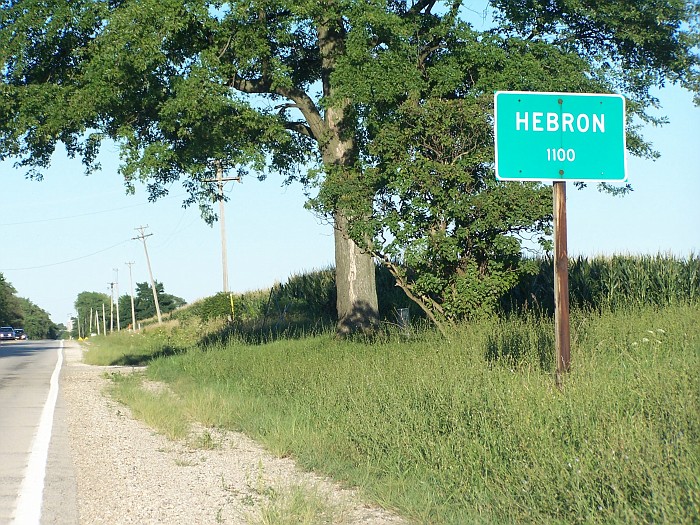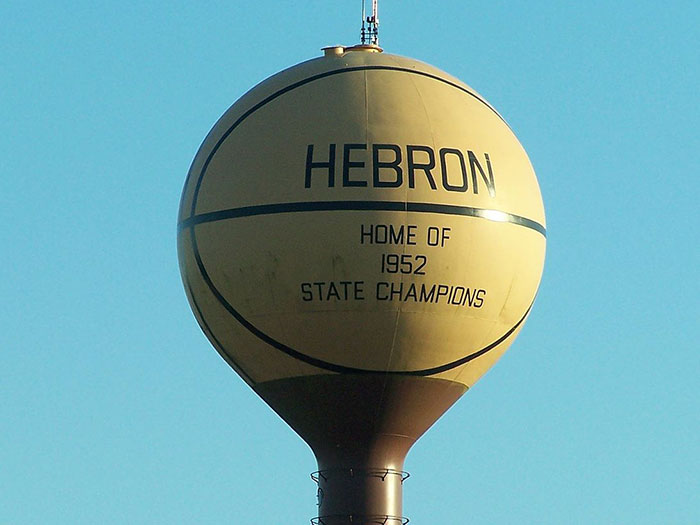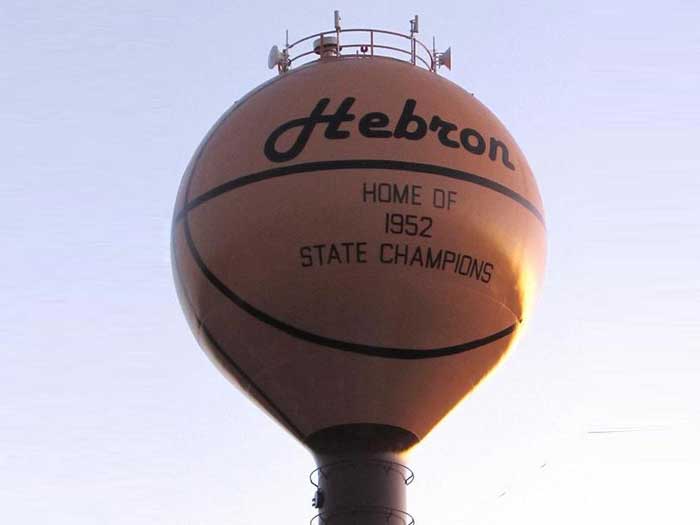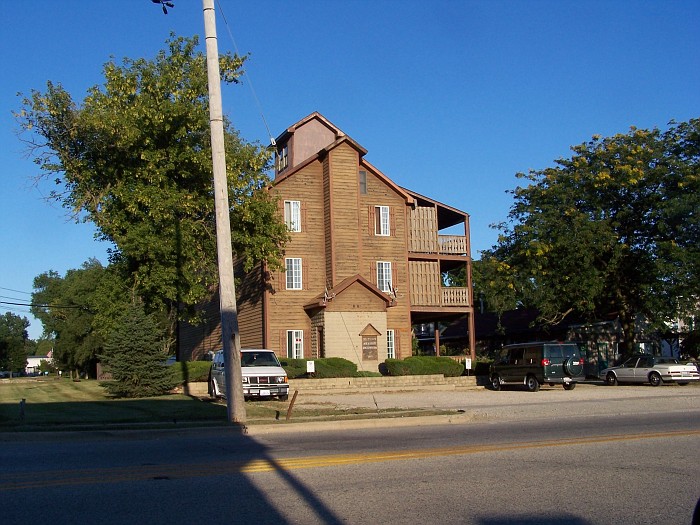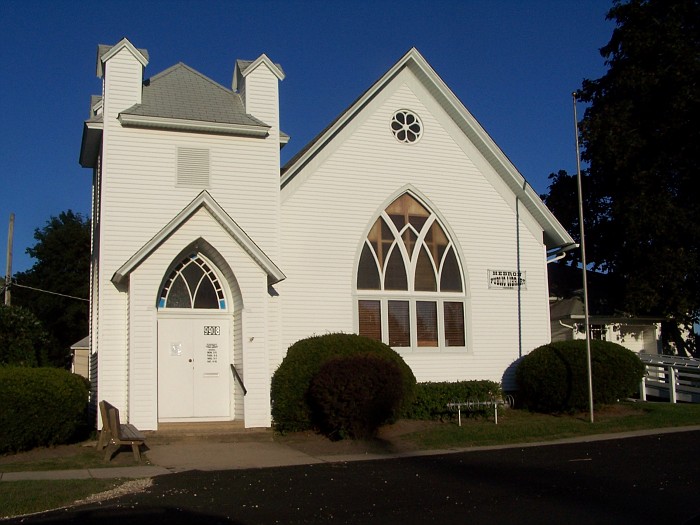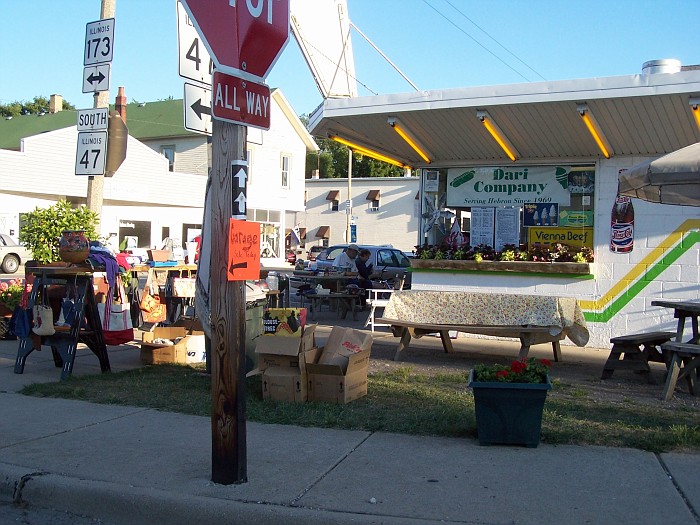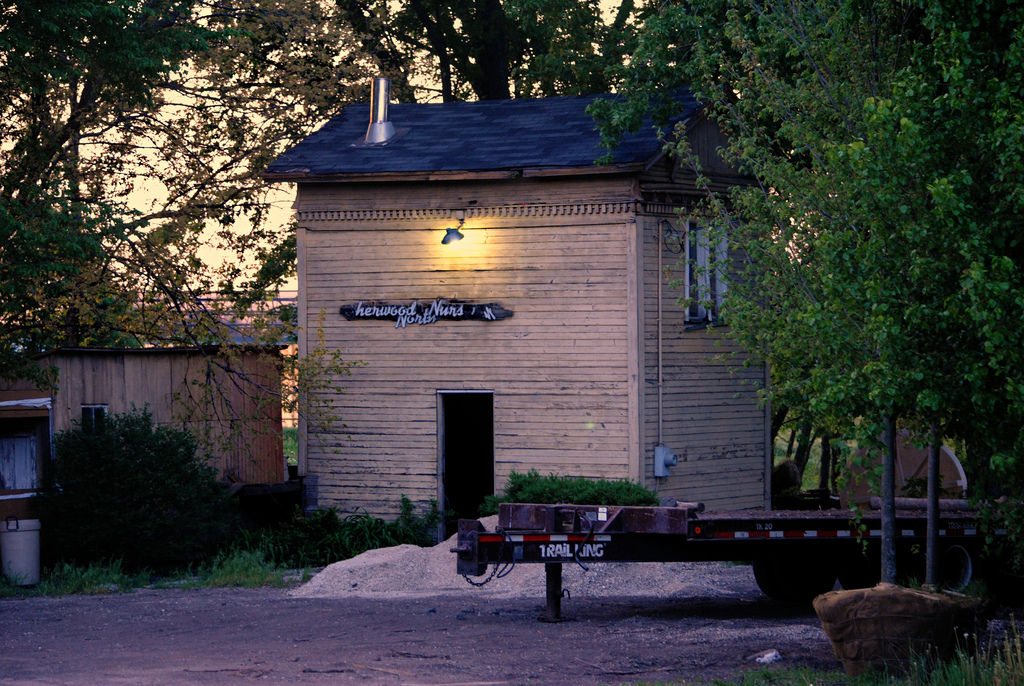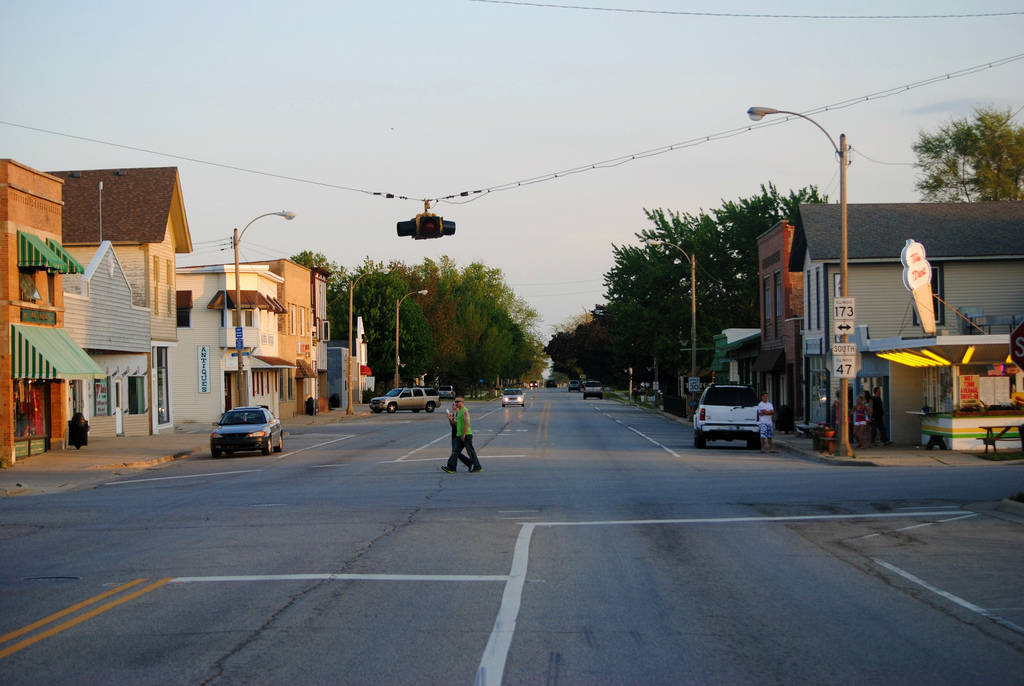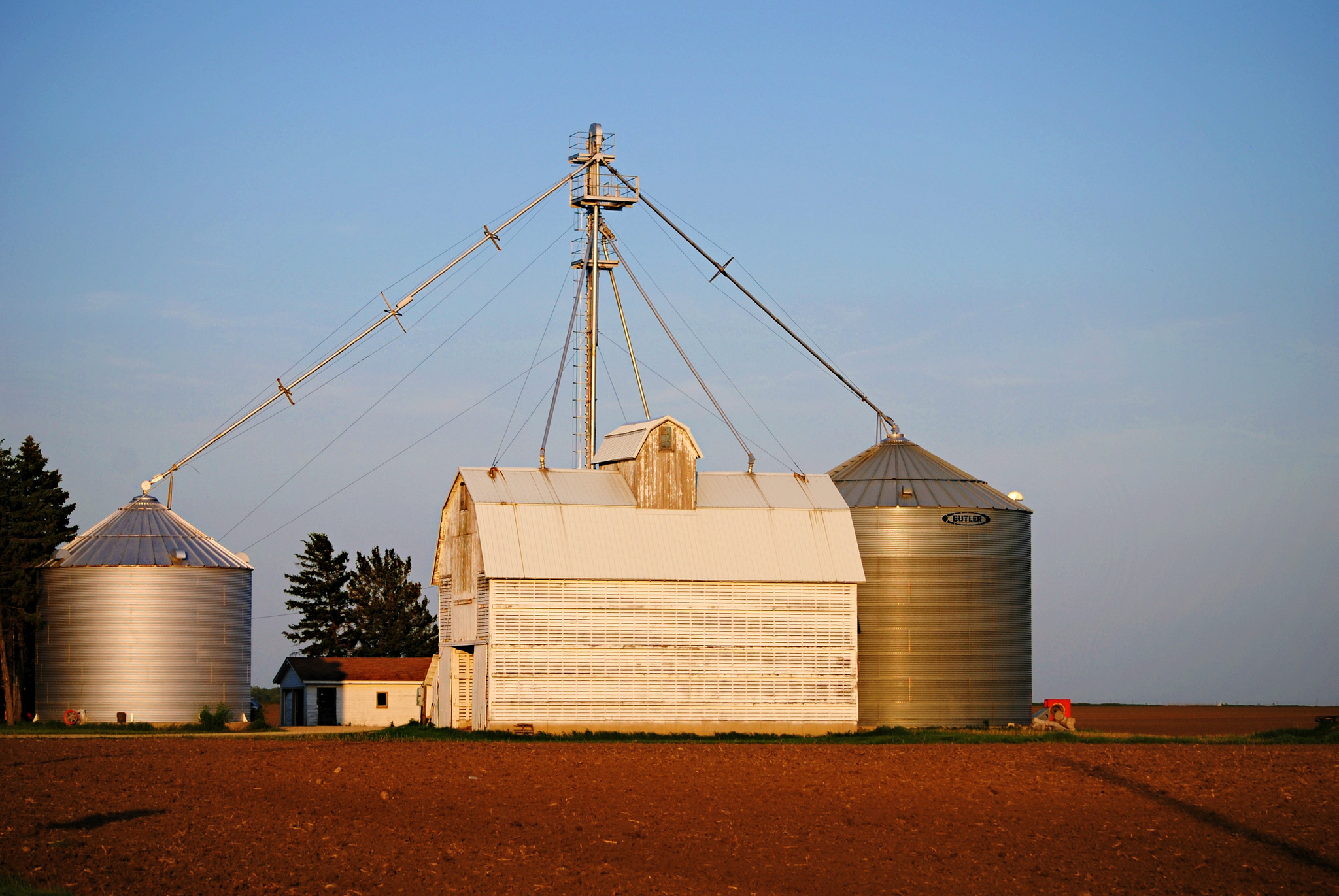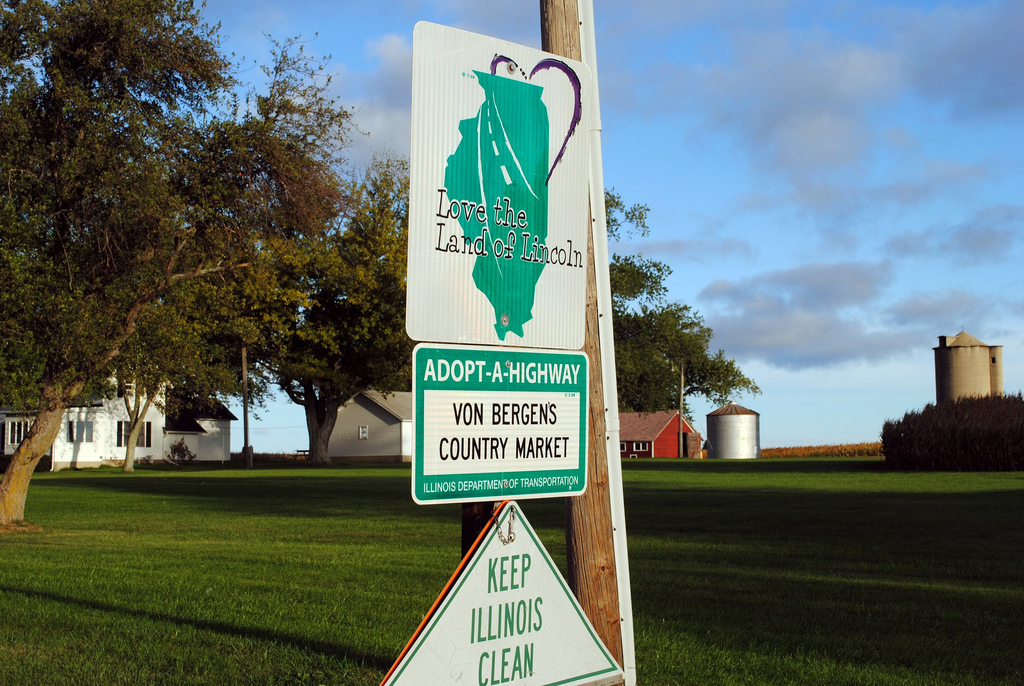1883 - Linn-Hebron Cemetary Dedication Marker
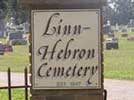 The Linn-Hebron Cemetery is located in Hebron. Highway 173 to Johnson Road, to Hillside Road. It is about 2 miles west of Hebron, Illinois. It is high on the hill and is much larger than it looks from the street. The cemetery was originally plotted in 1860, is still active and has much room for expansion. You can search through the graves at Linn-Hebron Cemetery at this link.
The Linn-Hebron Cemetery is located in Hebron. Highway 173 to Johnson Road, to Hillside Road. It is about 2 miles west of Hebron, Illinois. It is high on the hill and is much larger than it looks from the street. The cemetery was originally plotted in 1860, is still active and has much room for expansion. You can search through the graves at Linn-Hebron Cemetery at this link.
The center of the cemetery is marked with a dedication stone, the inscription is as follows: Dedicated by the grateful comrades and citizen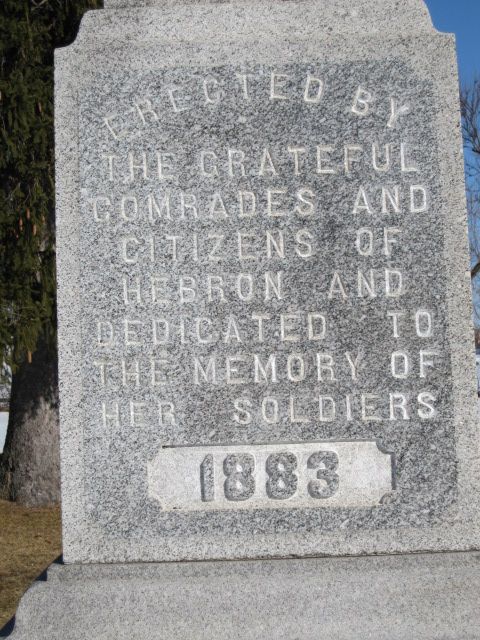 s of Hebron and dedicated to the memory of her soldiers 1883.
s of Hebron and dedicated to the memory of her soldiers 1883.
Linn Presbyterian Church began as a church in Hebron, the church which started the Linn-Hebron Cemetery in 1847. In the 1920s, the church moved to Zenda Wisconsin, but the cemetery remained in its current location. Current control of the cemetery belongs now to Hebron Township
There are notable residents buried at the Linn Hebron Cemetery, it is also the resting place of A.H. Button, who built the former Gypsy Lodge in 1883, now known as Geneva Inn. Buttons Bay of Lake Geneva was named in his honor.
The first Illinois laws protecting historically significant cemeteries were enacted in 1851. Since that time the state legislature has passed a number of laws governing the management of public cemeteries, including sales and ownership, the creation of local cemetery authorities, burial places of Illinois soldiers and sailors, and the care and maintenance of cemeteries. Those laws encourage local government and private organizations to maintain, regulate, and protect cemeteries. Also established by law are provisions for creating a local cemetery authority when none exists.
Contact your local historical or genealogical society, which may inventory or may have already inventoried each marker. Those records indicate which gravestones were visible when the inventory was made. Research into cemetery records and obituary notices should provide clues to the locations of obscured stones.
Public support can also be generated by the Illinois State Historical Society’s marker program. That program oversees the erection of a historical marker to memorialize an event or person. The markers program may involve your local historical or genealogical society, a civic group, or anyone interested in the area’s history. A historical marker may expand on the facts engraved on a grave marker, providing a brief biography of a significant local figure. For guidelines and an application, write: Illinois State Historical Society, Historical Markers Program, 210 ½ South Sixth Street, Suite 200, Springfield, Illinois 62701.
1881-1885
Hebron Photo Gallery
Copyright © 2024 - Wonderwave Design

